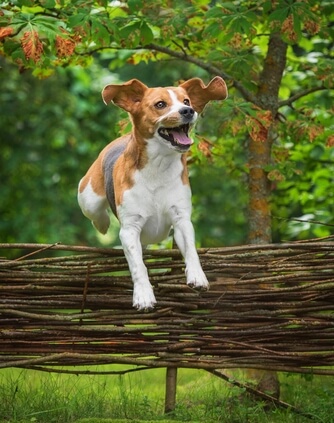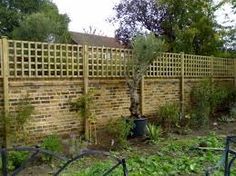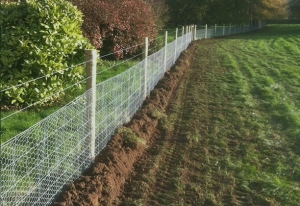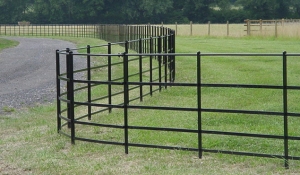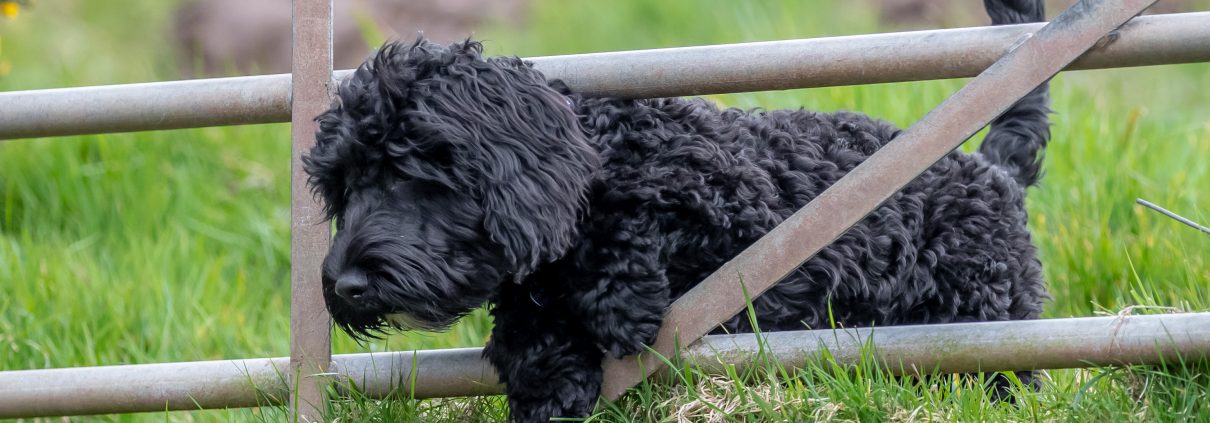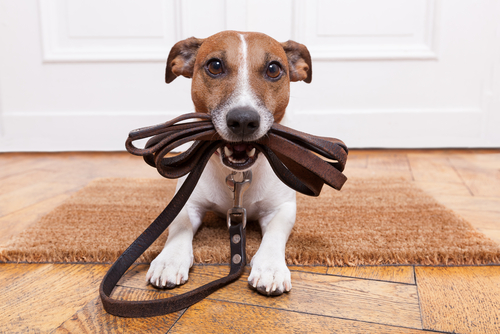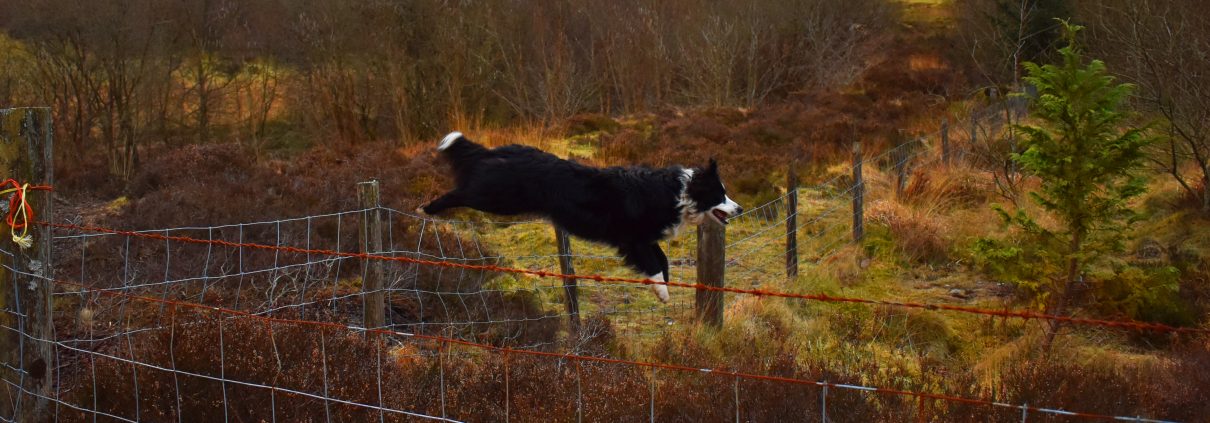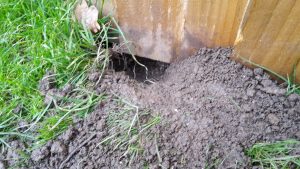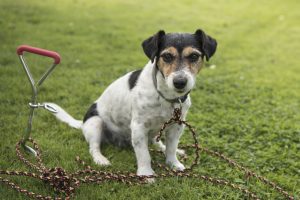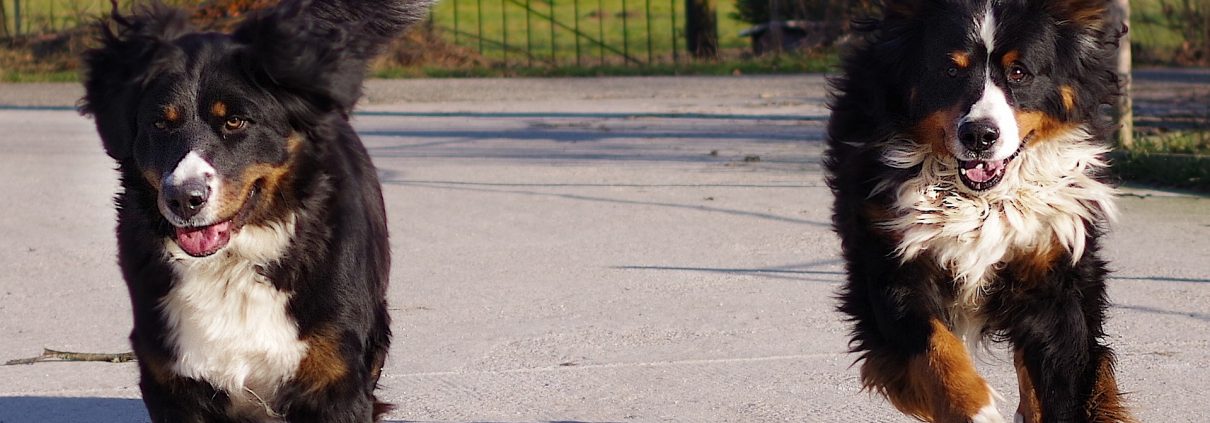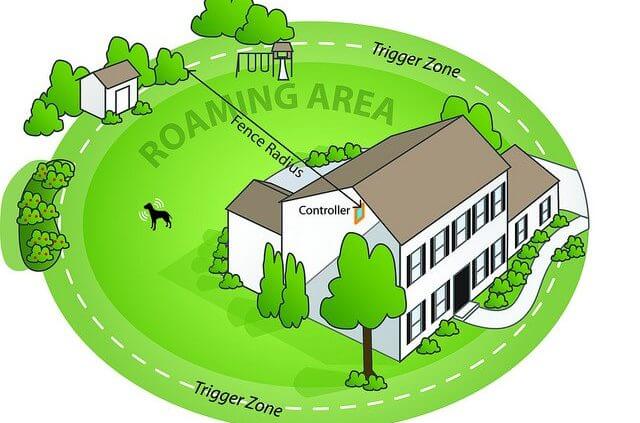Tag Archive for: dog fence
Affordable dog fencing – what are the options?
Affordable dog fencing
When it comes to affordable dog fencing there aren’t many options as fencing is actually quite expensive. As with everything you get what you pay for and it depends on whether you want to get your hands dirty. Naturally, these fencing options are based on how large an area you need to fence. The landscape that you need to fence. And also the breed of the dog that requires the dog fencing!
Dog fencing for small areas
If you are looking to fence a small back garden then it is likely that you already have a fence or wall but it isn’t meeting your needs. Watch your dog and see if he is using something to climb up and scrabble over or is he climbing or digging. Consider installing trellis above your fence. This can be bought from any good DIY store and is relatively quick to install. If you have a digger add a concrete footer below your fence by pouring concrete along the edge of the fence and sinking the bottom of the fence into the concrete before it dries. This is naturally a labour intensive job but should do the trick!
If you are not sure where he is getting out then one of our DIY dog fences is going to be the cheapest way forward. These fences are under £250.00 and will cover a small urban garden. If you compare the price of re-fencing a complete rear garden versus adding an electronic dog fence the dog fence will win on price all day long!
For small gardens with low fences, you may be able to upgrade your fence to a close board fence. These fences start at around £38.00 per metre fully installed. You will need to check that you can install a fence of this height before ripping out the old fence.
Rural gardens and small paddocks
It goes without saying that dog fencing for rural areas can be a headache. Not only are you trying to stop your dog going out but the local wildlife is busy pushing its way in. If you have an issue with rabbits and small dogs then this could be a good option for you but it is not the cheapest! Rabbit fencing starts at approx £130.00 per 50m without installation! If you are covering a 1-acre site this will cost in the region of £690.00 just for the galvanised mesh without any posts of labour. Also unless it is extremely well-installed rabbit fencing can be damaged by larger mammals such as Badgers, Muntjack and larger Deer.
If you have hedges or areas with no existing fences then the cheapest form of fencing will be either a stock fence or an electronic dog fence. If you have horses or livestock then you will need to look at stock fencing options. Of course, if it is only a dog or a cat that needs containing then an electronic dog fence is by far the cheapest option.
Our DIY dog fence can be expanded up to an acre for an additional £100.00 and a Professionally Installed dog fence will cost in the region of £1000.00 depending on the location and number of dogs. This would work out more cost-effective than the galvanized or stock fencing and would also protect the driveways. Installing gates can also be very costly and of course, this relies on people shutting the gate when they come or go! Our Professionally installed fences have a lifetime warranty on the hardware and a containment promise for the dog.
Large estates and difficult terrains
If it aesthetics then Estate fencing is most certainly the winner but you will need deep pockets to install this timeless classic! At around £80.00 per 2m panel + installation, it will very soon add up, especially on the large country estate! Again, you will need to think about gates and this type of fencing is not dog secure. Other popular types of fencing are post and rail with stock fencing below or chain link fencing. Chain link fencing is probably the cheapest starting from around £2500 for 1 acre + installation. Whereas if you are looking at fencing 10 acres using our Performance Series on a 10-acre site the cost would be circa £1800.00 including installation & training.
Riverbanks and Undulating Terrain
If your property goes down to the river you may be able to install a small picket fence. These will not stop all dogs as they tend to only be a 90 cm – 100cm high. Prices for Picket fencing start at around £12.00 per metre plus installation. Alternatively, you can use our dog fence to run along the boundary. This will keep your dog out of the river without disrupting the view. If you have very undulating terrain then you will probably need to install a stock fence but there would be a hefty surge-charge to install this! Again, an invisible fence can be installed for a fraction of the cost. The trencher used to install the invisible dog fence is extremely adaptable and be operated in both steep and undulating terrain. Images of the dog fence trencher can be seen on our installation & training page.
Dog Fencing price summary
Based on an acre (and excluding gates)
-
- Electronic dog fence (1 dog fully installed – covers gateways as well) – from £3.50 per metre installed.
- Stock Fencing (no gates) – from £7.00 per metre installed
- Rabbit Fencing (no gates) – from £8.00 per metre installed
- Stock Fencing with post and rail (no gates) – from £12.00 per metre
- Picket fencing (no gate) – from £20.00 per metre
- Close board fence (no gate) – from £35.00 per metre installed
- Estate fencing (no gate) from £40.00 per metre installed
Prices have been based on submissions from Companies in Berkshire (2019). Prices are based on properties in the local area and are a guide.
If you have been searching for dog fencing options then read our testimonials on our Trust Pilot reviews. If you would like more information or prices call us today on 03450 623623 or complete our quote form.
Electronic dog fence – FAQ’s for new customers
What You Need to Know About our Electronic Dog Fence: FAQ for New Customers
Booking a dog fence installation
Dog fence day
As a general rule, we commence the dog fence Installation will commence circa 07.30am! Interestingly this is to avoid rush-hour traffic and maximize daylight during the winter months. Our Installer will walk the boundary with your to fine-tune the electronic dog fence route. Once this has been agreed we should not need your attention again until we commence the dog fence training.
Our unique trenching equipment will bury the cable directly into the ground. We endeavour to bury boundary cables but if the terrain or an area is not suitable we can install cable above ground. Of course, the installation duration will vary depending on the size and the terrain but as a general rule, we will be ready to train your dog in the afternoon.
Electronic dog fence training
Now for the magic! We will not hook your dog up to the mains, we will not hurt your dog, we will train your dog using a recognised protocol. Actually, the training is very subtle and for some dogs, the scariest part is the temporary training flags. These little “flag” aliens can be quite scary to some dogs and others will play or stalk them. As with people, all dogs are different as we will treat them as individuals. The flags are a vital part of the training and will give the dog a visual for the electronic dog fence boundary.
Don’t worry! Your Installer will look after your pet, he will involve you in the training and you will be amazed at how quick and simple the training is. All our Installers are trained to offer the full Dog Fence Installation & Training program. They will find the level suitable for your pet and work to ensure that he or she understands the fence.
Hopefully, he will answer all your questions but if you forget anything or you have a query you can call the office after the installation. The notes from the day will be electronically uploaded so we can access the training info and answer your questions.
Does the electronic dog fence come with a guarantee?
Absolutely! DogFence offers the most comprehensive guarantee worldwide. Our lifetime hardware warranty covers the transmitter & computer collar for life and even extends to dog chews. But more importantly, we offer a Containment Promise on professionally installed, outdoor systems.
Should your system break down for any reason you can also schedule a service appointment and one of our engineers will test or repair your entire fence or train any new pets that you may have acquired.
Is there any ongoing maintenance for the fence?
Naturally, it is important to check the fence from time to time. At DogFence we recommend testing the electronic fence monthly. This would include checking the battery and collar fit and takes less than 5 minutes. The electronic dog fence collars will alert you when you require a battery. After the dog fence installation, you will be invited to sign up to our battery program. If you decide to purchase batteries on an ad-hoc basis that’s fine. But it is important to remember that when the battery runs out the pet can run out! Other than the battery and checking the collar fit there is no ongoing maintenance required.
How often do I replace the battery in my dog’s Computer Collar?
Of course, we all lead busy lives but once you see the red flashing light on your electronic dog fence collar you need to take action. The schedule for the battery changes is as follows:
- R12m & R7m (mini) collars – every 6 months
- R12 & R9 (standard collars – every 18 – 24 months
The green status light will change from a steady flash every forty seconds to a rapid flash every 10 seconds. At this point, you have approx 2 weeks to change the battery.
Where can I buy Batteries?
DogFence offers a few different options for customers to replace batteries.
How often should I remove the electronic collar?
VVIP – the collar needs to be removed every day! Leaving the collar on the dog can cause a skin irritation. We strongly recommend that you remove the collar for a minimum of 6 hours every day but we recommend 8 hours. On the day of the dog fence installation, you will be given all this information again together with a continuation sheet to assist you in the early days’ post installation.
If you would like to know more about our electronic dog fence please call us. We can chat to you and pop together an estimate for the dog fence installation – 03450 623623 or info@dogfence.co.uk.
Invisible dog fence – can pets out run them?
Can dogs run out of an invisible dog fence?
When looking into purchasing an invisible dog fence one of the most commons concerns is will it work? Can the dog run out of the containment fence? Of course, just a like an ordinary fence if the fence is broken or poorly installed it won’t work. So as with any product, an invisible dog fence needs to be correctly installed but more importantly, both the dog and owner need to know how to use it.
If the fence is correctly fitted and both the pet and owner are trained then a “dog out” will rarely happen. In fact, at DogFence we are so confident we even offer a containment promise on our fully installed dog fences.
So what are the reasons that a dog may outrun a dog fence system?
1. Dead Battery
Unlike other brands of containment fences, our Invisible Dog Fences have a long battery life. However, it is still important to check the battery using the tester every 6 months on our mini collars or 18 months on our larger collars. Consistency is the key to the successful use of an invisible dog fence. If the battery runs out the dog can run out. As a rule, we find that 60% of our troubleshooting is down to a dead battery. Using an invisible dog fence is similar to using your car, it requires fuel to operate and needs topping up and checking once in a while.
2. Loose Collar
As with all brands of containment fence, collar fit is crucial. If the collar is dangling around the dog’s neck like a necklace then it will be completely ineffective! Whilst it is true that once trained 90% of dogs will never receive a collar stimulation again the impulse may need to be activated if the dog is in a high drive moment. If the dog enters the zone and carries onto in the avoidance area with no consequence he or she will quickly learn to challenge the fence. A loose collar = a dog on the lose. We always advise checking the collar fit regularly – your pet may lose or gain weight so checking the collar monthly is extremely important. Our handy troubleshooting guide shows how to test the battery and check the collar fit.
3. Invisible Dog Fence Training – lack of Training
As with anything in life you only get out what you put in! When it comes to containment fencing Training is the keyword. If your pet is not correctly trained to use the fence then it will not work for you or your pet.
DogFence is the only UK Company to offer full onsite training within the package. In 2018 the UK Government announced that they would introduce new legislation to ensure that all dog fences are sold with an installation package. At present, the legislation is still pending. It is hoped that through this legislation there will be a standardized certification program. As a small part of our customer base chose to self-install a DIY Dog Fence we offer full support. Naturally, unlike a total mail order Company, our years in the field mean that we can offer expert guidance and support to those who chose to self-install.
When is come to containment training there are 4 critical elements:
- Warning flag & audible only familiarisation
- Introduction to correction (impulse)
- Distraction Training
- Reinforcing Training
Warning Beep Training
All invisible dog fences should be sold with flags – at DogFence we use a min of 20 per 100m. The collar should be set to audible only and the pet should be introduced to the training flags. It is with warming beep that will stop the pet in a red mist or high drive moment.
Introduction to correction
The pet must be on a lead through phases 1 – 3 at all times. This is part of the training where the correct impulse level is determined for each pet. It is important to start on the lowest possible level and look for any signs of recognition/reaction to the impulse. This could be as subtle as a flick of the ear of a small flinch. All good containment fence collars should have flexible training levels.
Distraction Training
Once the pet is avoiding the training flags it will be necessary to create some distractions. These can be getting a game going with the pet, having someone else walk through the flags or bringing another dog to the property. Our DogFence Installers will usually involve the customer as part of the distraction and it’s a great way for the owner to really get involved.
Reinforcing Training
Once the pet fully understands the containment fence it is important that he or she associates it with the property and not the installer. The installer will leave full written instructions on how to carry on and when to allow the dog off the lead (cat training is carried out internally).
Freedom!
Once trained the pet has complete freedom and the owner has peace of mind.
4. Faulty equipment – Not all Containment Fences are the same!
Dogs will be dogs and the invisible dog fence collar goes through a lot of wear and tear. Many brands of containment fences are Chinese made and the quality is poor. Our invisible dog fences are high-quality but even these can go wrong. Recognizing that consistency is king DogFence offer a Lifetime Warranty on our professionally installed fences. The warranty covers both the transmitter and the computer collars. And because dogs will be dogs we add in a warranty to cover dog chews on the computer collar as well!
As with a car, it is important to check things are working. Our Installers will show you how to carry out the simple monthly checks using the testing tool. Using the correct battery is extremely important. A good quality containment fence collar should alert when a battery is required. At DogFence we recognize that people are busy so we also offer an automatic battery renewal programme.
Similary boundary wire quality is vitally important. If the boundary wire is too thin it will be very prone to damage. DogFence uses a high-quality heavy-duty boundary wire which is 25 times heavier than most DIY brands supply. When looking for an invisible dog fence look for the following:
- Long Battery life

- Lifetime Warranty on Transmitter & Collars
- Heavy-duty wire
- Professional Installation & Training
- Full after sales service
Escaping dogs will always be a problem as they can cause road accidents, kill or harm livestock or wildlife. Using a containment fence is an excellent way of giving the pet freedom but keeping them safe at home. Not all containment fences are the same and not all containment fence suppliers offer the same level of service. If you would like to receive some professional advice and information call us on 03450 623623.
How do I take my dog for walk if I use a dog fence?
How do I take my dog for a walk if I use a dog fence?
After you have had your dog fence installation one of the most common questions we get asked at DogFence is “how do I take the dog for a walk?”.
It’s actually really simple. The DogFence installer will have trained your dog or cat to stay within the dog fence boundary. This is a reverse training protocol and usually takes the dog approx 7 – 10 days to feel fully comfortable with leaving the property.
There are 2 main points to observe:
- Never allow your dog to cross the boundary unless he has contact with you. This could be with the lead or by carrying him or simply having a hand on his shoulder.
- Never allow your dog to cross the boundary with his fence collar on – even with the system turned off.
To cross the boundary:
- Remove the dog fence collar and put it in a safe place. Do not turn off the fence.
- Pop him on his lead and walk him up to the exit.
- Ask him to sit or stop him before the boundary line (only for the first week).
- Give the command to walk and walk slowly out of the property.
- Give him praise when you have crossed the boundary.
- Repeat the process when you re-enter the property.
The best way to see how it works is to watch the lovely Lionel demonstrating how it’s done:
When we install a dog fence for you we will run through how to take your dog for a walk after. As with any new training, it may take your dog a few days to adjust to going out for a walk. If you would like to learn more about how we can give your dog freedom in the garden check why not call us today on 01628 476475?
Dog Fencing Ideas – how to keep Fido home!
Dog Fencing Ideas – solutions to keep Fido safe
Dogs will be dogs so exploring different dog fencing ideas is a must for any canine owner. Having spent 17 years fencing dogs we have come across many different ideas. As with people no two dogs are the same and of course they all live in different locations.
Rural dog fencing ideas
Many rural locations are difficult to fence. Understandably this could be because of the terrain being very hilly, wooded or prohibitively large. Furthermore most rural properties are surrounded by hedgerows. Hedgerows may be a deterrent for a dog with a low prey drive but for many it’s an open avenue of escape.
Stock Fencing
Stock fencing is a traditional dog fencing idea for rural properties. Used to contain livestock it is adaptable for use in rural gardens. For many dogs this will give enough of barrier to prevent the dog jumping out of the property. The downside is that this type of fencing is it is costly, unsightly and can be damaged by wildlife. Badgers and foxes will often make holes in this type of fencing and thus some rural owners find this dog fencing idea a temporary fix. Also the cost of such fencing can work out extremely expensive; starting around £6.00 p/m + gates etc it can a costly exercise.
Deer Fencing
Deer Fencing; again another great rural solution but sadly it is extremely obtrusive more expensive than stock fencing. Again, the downside with this fencing is that badgers and small mammals will make holes that then become an escape avenue for your dog!
Electronic dog fencing
Electronic dog fencing; you may not be familiar with this product even though this type of dog fencing idea has been around for over 40 years. Using a boundary wire, transmitter and a computer collar worn by the pet this type of fencing can be used on any terrain. Electronic dog fences do need to be professionally installed. This is because the pets need training but they a more cost effective solution than traditional methods. As a guide price an rural installation of approx 2 acres for 2 dogs would be circa £1300.00.
The advantage of this type of dog fencing idea is that it can be used cost effectively on very large properties (up to 350 acres) and can be removed if the owner moves house. It is also invisible so will not affect any planning restrictions or spoil the view!
Kennels and dog runs
Kennels and dog runs are full proof method for dog containment. The downside of installing a run is that many dogs become bored and exercise is limited. The cost of installing Kennels can be high but equally these can be relocated to a new property.
Urban dog fencing ideas
Most urban gardens are fenced in some way but these may not all be dog proof! Some new sites have planning restrictions on fence heights and even open plan. Many properties use Picket or Rail type fencing which dogs can easily jump over or squeeze through.
Planning permission is not usually required in urban areas. Fences must be no more than 2m high or 1m high near roads. The most popular type of fencing is for urban houses is Close Board fencing.
Close Board Fencing
Close board fencing is a great dog fencing idea for many urban owners. It is generally tall enough to stop jumping dogs and quick to install. This type of fencing comes in varying heights and can be installed by most handymen. The downside is that some dogs will dig under and there may be restrictions to installing this type of fencing on some new estates. As a rough cost to install on a small rear garden it would be approx £1200.00.
Electronic dog fencing – no need to install gates!
As with the rural properties this type of fencing is a very cost effective solution. This type of dog fencing idea also gives the owner the possibility of protecting the drive within the price. It is true that the larger the property for more cost effective the electronic dog fence becomes but small properties can also be fenced with this product.
Many owners may already have a Close Board or Picket fence installed and need additional backup. The electronic dog fence can be run around the existing fence if the traditional method is not working. Our Installers can place the cable to prevent the dog jumping over or digging under the existing fence. The cable can even be run under the drive to protect this area. Most owners are concerned that this means digging up the drive but the installation is both neat and discreet. A typical urban property would cost less £1000 to fence and this would include a driveway loop.
Cat Runs
Interestingly cat runs can be used to keep both dogs and cats safe. These type of structures can prove expensive if they are professionally installed and may not be aesthetically pleasing. A cat run suitable for a dog would usually cost from £750.00 upwards depending on the size.
A DogFence Ltd we have been Professionally installing electronic dog fences for over 17 years. The dog fencing ideas that some owners come up with to keep their pets at home can often be amusing. Over the years we have seen:
- Old Fireplaces in the hedge!
- Old garage doors down one boundary!
- Orange builders netting – not attractive or effective!
- Hundreds of dogs on tie out stakes – who have wound themselves up to the pole 🙁
- Electric horse fencing – Harsh and not fall proof!
If you would like to learn more about how we can keep your dog safe at home please call us or visit our web site. We offer bespoke Quotes using our online measuring tool – simple, accurate and effective. 01628 476475 or info@dogfence.co.uk
Dog proof fencing – Does it really work?
Let’s talk about dog proof fencing
Dogs are a man’s best friend and we all want them to be part of the family, but trying to keep them contained and safe can be a tricky. Dog proof fencing is not only difficult to source but it can be expensive. According to the highways Agency, in 2016-2017 there were 286 reported incidents of dog deaths on UK roads. When it comes to installing a dog fence that is dog proof what are the options?
We have all spent hours searching online, gathering tips and ideas on how to install dog proof fencing. Often after hours of searching we can still be none the wiser. Lets examine the types of fencing and find those are truly dog proof!
Traditional fencing – is it dog proof?
Some properties have no physical forms of boundary so the idea of traditional fencing could be the only option. The more common form of dog proof fencing is post and rail.
Post & Rail
This is generally a costly option as it is installed by contractors who can charge upwards of £35/hr for labour and equipment and then there is the cost of the fencing itself which can be approximately £15/m. A customer recently spend £6000 for a 4 acre plot on this form of fencing and their dog was still escaping. Most fencing starts from around £30.00 per metre.
Post and rail fencing needs to be high enough to stop the dog leaping over it. German Shepherds, Weimarners and Pointers can clear a 10ft fence in the blink of an eye. Then there are the diggers! Your dog may work on a tunnel over several days – so you may not be able to see it until it’s too late.
Having high fencing can look imposing and may block any views such as pretty countryside. Equally concreting netting into the ground is costly and unfriendly to small wildlife (in particular hedgehogs).
Trellis
If you have real leaper you may want to install Trellis on top of existing fencing. This will may depend on local planning restrictions.
Wildlife
There are pro’s and cons to installing traditional fencing when it comes to wildlife.
- Wildlife cannot may not be able to pass from garden to garden
- Wildlife can damage fencing when trying to gain access to a neighboring garden
- Dog’s will use holes made by wildlife to escape
- Expensive patching up fences due to damage.
Dog runs and cages
Dogs love to run around and get as much exercise as they possible. If you have a large garden you may not be able to see where they are. Runs and cages are an ideal a way to keep them contained in an area. By using a run or cage they can still have some outside time. Whilst most cages are dog proof they don’t give much opportunity for exercise. For some dogs such as Labradors, Lurchers and Jack Russells they thrive on running around. They need to be stimulated by chasing birds or rabbits. With a run or cage this will not be possible.
Dog runs are ideal as a temporary measure. This type of dog proof fencing costs in the region of £300 for a 7.5ft dog run and goes up to around £1500 for an outdoor kennel.
Points to consider
- May be able to dig underneath
- Must have a kennel or somewhere to shelter within the run
- Do not offer much exercise opportunity
- Expensive to purchase
An adult dog can be caged for as long as eight hours on occasion, although daily crating of this length can have negative effects on your dog’s well-being. Make sure that they received adequate exercise before a long stay in the crate. The exercise should be at least 30 to 60 minutes.
All tied up – or dog fence?
Most rural gardens are not dog proof. It can be tricky to monitor dogs all of the time in the garden. They pick up a scent of a rabbit or see a group of people walking across a field. Dogs are social and they naturally want to say hello. Taking your eye off them or not having complete control can result in dogs running into the road and getting injured. Notably dog attacks on sheep are rising and it is essential to keep dogs under control. It maybe that the dog ran out whilst chasing a rabbit and ended up with livestock. These are real day to day scenarios often encountered by rural dog owners.
Is tethering a solution?
According to the RSPCA tethering isn’t illegal but it does have advisories.
“Tethering up dogs is only suitable for a very short periods of time, as dogs left for longer may become distressed or potentially cause injury to themselves”. Dogs love freedom and tethering them up isn’t the best way to give them that freedom.
Rather surprisingly we would agree with the RSPCA on this point! We have often been asked to install a dog fence for an escaping dog. On arrival the dog is tethered and usually they are all tied up against the tether post.
- Does not allow freedom
- Can be distressful for the dog
- Must have access to shelter
Dog Fence containment systems – are really these dog proof?
Interestingly here at Dogfence Ltd one of our most common questions is “what is a dog fence”? At DogFence Ltd we supply and install electronic dog proof fencing to keep your pets secure within a boundary. This keeps them safe from roads and away from the threat of a farmer’s gun. The cable is installed underground around an agreed boundary. White flags are then placed around the perimeter so that the dogs have a visual aid during the training. A radio signal is run through the cable from a transmitter and sent to a small collar worn the the pet. The receiver collar omits a warning beep followed by an impulse when the dogs approach the boundary. Dog Fences are far more dog proof than a traditional fence. cannot jump over signal
- Cannot dig under the signal
- Can be installed on any terrain
- Covers driveways and open areas (river banks, lakes and ditches)
This form of dog proof fencing is positive because it gives the dog their freedom. A Dog Fence gives you as a pet owner the peace of mind that the dog is safe. It has also been proven to show that it strengthens the relationship between owners and their pets. Below are a few other deciding factors:-
Points to consider
An electronic dog fence is affordable for most people. Although electronic fencing can be expensive, it is often significantly less than the cost of materials and installation for traditional fencing.
Electric fences give homeowners some flexibility. Electric fences (stock fences) should not be confused with electronic dog fences. Of course electric fences are still physical fences and if touched by a human or child will give a significant jolt. They are also aesthetically unpleasing as they are designed for agricultural and not domestic users. Electronic fences don’t interfere with surrounding views. In addition, an electronic fence can be installed more quickly than many traditional fencing options and are safe to both wildlife and humans. These fences are often referred to as “invisible fences”.
An Invisible dog fence is proven to be effective. Many dog owners choose this fence because other alternatives have failed to keep their dog within the boundary. The dog either climbs over or digs under a traditional fence. In most cases, dogs quickly learn to stay within the boundary line to avoid the warning signal and correction. They work silently 24/7 covering all areas of the property, even driveways and open areas.
There are many types of fencing and when it comes to choosing dog proof fencing this will depend on your budget. If you choose to go down the traditional route this will be a large investment but it may also enhance your properties value. Electronic fencing is most certainly the cheapest option. This type of fencing can be moved from one property to another making it the most effective method of dog proof fencing.
To obtain an estimate or learn more call us on 01628 476475. https://dogfence.co.uk/quote/
How to stop the dog escaping from the garden?
Ways to stop the dog escaping from the garden?
A common question that we hear from owners is how can I stop the dog escaping from the garden. Dogs will be dogs, some escape because they have a high prey drive or they are bored, sometimes it’s food driven. When considering dog proofing the garden there numerous options available. An escaping dog is not only dangerous but can be very stressful.
Traditional Fencing:
Close board or wooden fencing is a popular option for smaller properties. The cost of close board fencing starts from around £80.00 per meter installed but it depends on the property location and terrain. Stock fencing is a slightly more cost effective solution for some properties but may not be secure enough for small dogs and of course dogs will be dogs and they can dig and burrow under both close board or stock fences. In general the weakest part of the property is the driveway. To dog proof a driveway can run into thousands depending on the type of gates chosen. If the dog is escaping onto a road then securing this area is a priority but will be costly and so a traditional fence may not be the best solution to stop the dog escaping from the garden
Radio dog fences
Radio dog fences have been available for over 40 years but many people still do not know that they exist. They are often referred to as invisible fences or a freedom fence. A radio dog fence is usually a much cheaper method to help prevent the dog escaping from the garden. The fence is more like a virtual fence – there is nothing to see and the fence can cover large areas or areas that would not easily be fenced by a traditional fence. A radio fence is a simple solution to stop the dog escaping and in monetary terms an inexpensive solution.
So what is a radio dog fence. In simple terms it is just a radio transmitter, a boundary wire that surrounds the boundary or the area to be “fenced” and an innovative computer collar which is worn by the pet. The transmitter sends a coded signal through the boundary wire and a “no go zone” is set when the pet enters the no go zone the computer collar activates and lets out a high pitched warning beep to alert the pet that they are in the wrong area. If the pet continues further info the zone the collar then gives out a small static shock (correction) which is set to the pets personality. With the assistance of some temporary training flags and training from the fence installer the pet quickly learns where the boundary is.
The great advantage of radio dog fence is that is covers all areas including the driveway so if someone leaves the gate open the pet cannot wander in the road. Also the radio signal is 360 degrees around the cable so dog or cat cannot climb over or dig under the signal. With the DogFence system the signal is also quicker than any other pet fence worldwide so that dog or cat cannot out run the fence.
Electric stock fencing:
Electric fencing or electric stock fencing can be used for pet containment but it is not advisable and the shock given out by an electric dog fence is 250 times higher than the output on a radio dog fence. Also with an electric fence if the pet gets stuck in the fence they will continue to be shocked until the fence stops or they are rescued but with a radio dog fence the fence shuts down after 15 seconds to ensure the pet is not over corrected. Of course an electric fence is not only more expensive but cannot cover gateways or driveways and if there are children or members of the public close by they are also affected by the electric fence.
Dog Runs
Dog runs are a great solution for keeping your dog within a confined area of the garden but these can be very costly and unsightly and of course will only give the dog a limited area to use. It is also advisable to install a dog kennel within the run so that dog has somewhere to go to if it is very hot or rainy. In some areas planning restrictions may apply and it is always advisable to check with our local council.
Other Solutions to stop the dog escaping maybe to try to train the dog to stay in the garden, for some breeds this maybe a workable solution but for those with a high prey drive or who have had a previous history of constantly escaping the drive to leave the property may be too great.
Summary
Here at DogFence Ltd we meet customers with different breeds and personalities but they all have one thing in common! they want a solution to the stop the dog escaping. Many have tried other forms of fencing and many are sceptical as to whether a radio dog fence will work. Our customers are our best advertisement (Customer Testimonials).
If you would like to learn more about our radio dog fences please call us on 03450 623623 or visit our web site www.dogfence.co.uk.
Wireless dog fence – the truth – do they work?
Wireless dog fence – is this an easier solution?
What’s the buzz about a wireless dog fence? When considering installing an electronic dog fence one of the factors will be “do I need to install a boundary wire? A wireless dog fence seems like an easy solution. No boundary wire to dig in, just plug in and go! For over 40 years the electronic dog fence has been used to keep pets safe. Traditionally this involved digging or installing a circuit of boundary wire to keep the cat or dog contained. The idea of simply plugging in and going seems so much easier so why are these fences not more popular?
The wireless dog fence involves installing the transmitter into centre of the property. From central transmitter a circular signal creates the no go zone around the garden. Sounds simple enough, however, the downside is that property owner needs to consider several major facts when looking into wireless dog fencing.
Considerations re installing a wireless dog fence
- A Wireless dog fence may not suitable for narrow properties – the property needs to be 30ft wide min.
- Terrain challenges: The lay of the land may not be suitable. A wireless dog fence is not ideal for sloping or terraced gardens.
- Heavily wooded areas can interrupt the signal. Similarly metal objects and fencing can grossly effected the signal leading to dead spots. This happens with all AM electronic dog fences.
- A wireless dog fence collar cannot be worn indoors as is prone to activation from objects within the house – TV’s and dimmer switches as well as other household appliances.
- Fence wobble – the boundary with a wireless dog fence fluctuates so the dog boundary will change causing confusion/danger to the dog .With some systems the Wireless Fence wobble can be up to 16ft.
- A wireless fence cannot be used with houses that have a mobile phone signal booster or smart meter.
- The Wireless dog fence receiver collar is heavy and bulky and not really suitable for small dogs or cats.
- Does not give adequate warning if the pet enters the zone.
The wireless fence does work for some owners. It would be fair to say that this product is probably more suitable to US houses where the house is on an open plan flat plot. For UK households most gardens are already fenced and the wireless dog fence is a backup. With US houses the wireless fence may be the only containment parameter. If the zone does not cover every inch of the property it is not quite so crucial. With a UK garden if the owner has a fence running around the boundary and the installs an interior circular zone this is confusing for the dog.
Also if the owner is prepared to remove the computer collar when the dog enters the house this would make the wireless fence a good option.
Most owners will agree that boundary wobble is unfair for the pet the if the wireless dog fence is being added as a secondary fence it may not be quite such an important issue.
Advantages of a wireless dog fence
- Quick and easy to install.
- No boundary wire to lay – so cable cannot be damaged.
What about wired systems?

The wired fence can be used to cover irregular boundaries even on undulating terrain and can create inner loops to cover pools or play areas.
The advantage that a wired dog fence has over the wireless fence is that it can be used for any shape of property, on any terrain. Also the FM systems* guarantee no false activation on the pets collar both internally and externally so the collar can be worn both inside and outside. Different technology within the wired fences enables the size and weight of the collars to be far smaller and lighter. Collars used for wireless dog fences are heavier and bulkier due to the antenna and batteries.
*Dog Fence UK are the only electronic dog fences worldwide to us an FM signal.
- A wired dog fence can be installed on any terrain and can cover irregular shaped or undulating boundaries.
- If an FM system is used there is guaranteed no false activation on the collar.
- Boundary is consistent – no mixed message for the dog.
- Can cover a larger area – up to 6km of boundary wire (350 acres).
- Collars are smaller and lighter (suitable for all breeds and cats).
- Always gives an audible warning.
Disadvantages of a wired dog fence
- Boundary wire can be broken, therefore, burial of wire is advisable
- Installation will take longer
- Not as easy to move from house to house.
October 2018 Update
Since this blog was originally written the criteria for the installation of both wired dog fences and wireless dog fences has changed in the UK. New Government legislation to be introduced shortly requires that all electronic dog fences need to be professionally installed with training. We are currently waiting for the Governments position regarding wireless dog fences.
Both wireless dog fences and wired systems will contain most pets but it is worth researching before purchasing to avoid making a costly mistake. The training time for both wired and wireless dog fences should be the same and this will be dependent on the size of the area, age and breed of dog.
Should you wish to talk to one of our experts regarding an electronic dog fence installation please call us on 03450 623 623 or email us @ info@dogfence.co.uk. www.dogfence.co.uk.
Articles of Interest?

